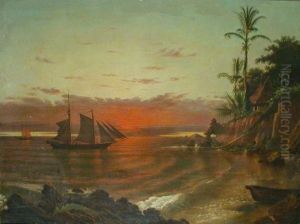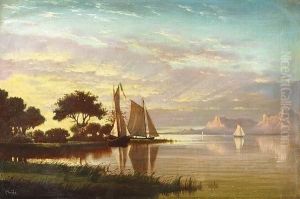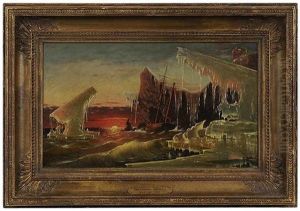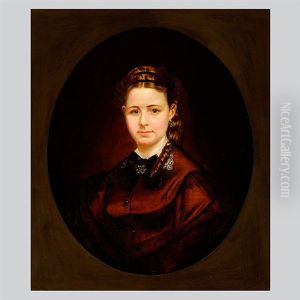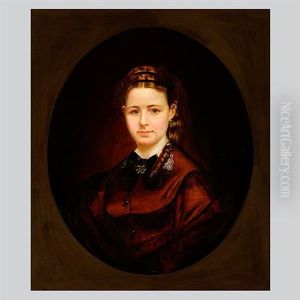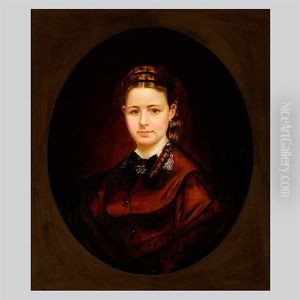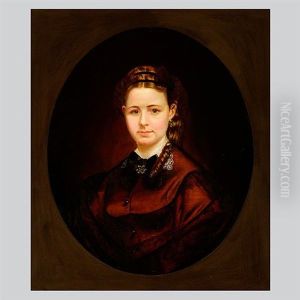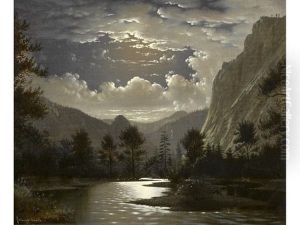Fortunato Arriola Paintings
Fortunato Arriola was a Mexican painter born in Guadalajara, Jalisco, Mexico, in 1827. Notably, he is recognized for his work during the 19th century, particularly in the realm of romantic landscape painting. Arriola's artistic journey began in his native Mexico, but he spent a significant portion of his career in San Francisco, California, where he migrated during the Gold Rush period around 1849.
Arriola's paintings are characterized by their vivid depiction of landscapes, often infused with a dreamlike or fantastical quality. His works often feature tropical scenes, ruins, and the use of dramatic lighting, capturing the sublime aspect of nature that was a hallmark of romanticism in art. His landscapes are not just mere representations of particular locations but are imbued with emotion and a sense of the ethereal, reflecting the romantic era's fascination with the power and mystery of the natural world.
There is little information available about Arriola's formal training or early career in Mexico, but his work suggests that he had a strong foundation in the techniques of painting and a keen eye for composition and detail. In San Francisco, he became part of the vibrant artistic community and contributed to the city's cultural life. His works were exhibited and gained recognition for their beauty and skillful execution.
Tragically, Arriola's life was cut short when he perished at sea in 1872 while on a voyage from San Francisco to Mazatlán, Mexico. Despite his untimely death, Fortunato Arriola's paintings remain a testament to his talent and vision, capturing the essence of romantic landscape painting and leaving a lasting impression on the art world. His works are a part of the art historical narrative of both Mexico and the United States, particularly within the context of 19th-century landscape art.

